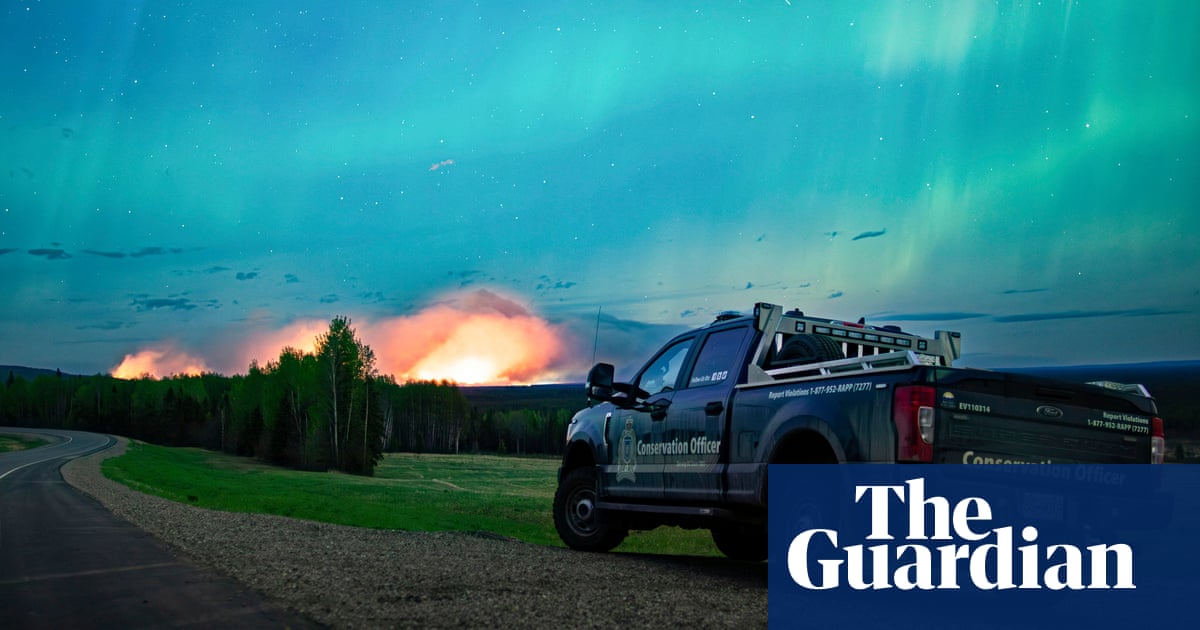Infra
No internet, no phone: Canada wildfires expose fragility of rural infrastructure

Shortly before sunset on Friday, residents of Canada’s Yukon territory discovered their connection to the outside world had vanished. Internet access had gone. Mobile phones showed no signal. Landlines had failed.
Chaos quickly set in. Electronic payments couldn’t be processed. In Whitehorse, the capital, most ATMs couldn’t function and the few that did were quickly drained of cash from panicked residents. City officials warned that the ability to call police, ambulance or fire services was non-existent.
Across much of Canada’s north-west reaches, a similar spectacle played out after a pair of wildfires damaged two key fibre optic cables. The telecoms company hit by the outage blamed a “perfect storm” of events for the loss. But experts say the total loss of communications was a “cascading disaster” that exposes the broader weaknesses and vulnerabilities of the bare-bones infrastructure of the Canadian north.
Northwestel, which provides telecommunications for the Yukon, Northwest Territories, Nunavut and northern British Columbia announced on Friday that a wildfire had damaged a critical fibre optic cable near the town of Fort Nelson. The company said it had also lost its redundancy cable due to a separate wildfire burning near Jean Marie River and Kakisa in the Northwest Territories.
Northwestel’s vice-president, Tammy April, told CBC North it was the first time the company had experienced a total severing of communications.
“To have fires happen just exactly where they did, I don’t think we’ve seen something like that happen before,” she said. “It’s tremendously concerning.”
In recent years, Canada’s record-breaking wildfire seasons have enveloped a region of the country historically spared from widespread destruction. And with the trend of warmer temperatures and prolonged periods of dry weather expected to continue in the Canadian north, so too is the risk of frequent and more intense wildfire seasons.
Last summer proved particularly hazardous, after nearly three-quarters of residents of the Northwest Territories were forced to flee their homes as wildfires raged near the region’s biggest communities.
Disaster mitigation experts say disruptions to infrastructure have disproportionate effects on northern communities, which have far fewer resources. Most northern communities have only a single road leading in and out, and a single exposed fibre line connecting them to the outside world.
“We need to better understand things like vulnerability ‘pinch points’, where the loss of one fibre optic line, for example, has widespread impacts,” said Glenn McGillivray, the managing director of the Institute for Catastrophic Loss Reduction. He pointed to the atmospheric river flooding in south-western BC in November 2021, which caused landslides and flood waters that washed out highways, overpasses and rail lines. Those events in turn shut down Canada’s busiest port, forcing officials to use airlifts to bring food and water into stranded communities. The event also led to fuel rationing in the province.
McGillivray said “cascading disasters” highlighted the need for more backup systems in northern communities, a reality residents know all too well.
Last year, the community of Fort Simpson lost all mobile and internet connection with the outside world. During wildfire evacuations, both Hay River and Fort Smith also lost connection for nearly a week.
“Last year demonstrated what that vulnerability looks like when it arrives at an extreme,” said Ollie Williams, co-founder of the Yellowknife-based Cabin Radio. “People knew these risks existed. They’re not ignorant of the dangers. But the money, or in some cases the technology, just isn’t there to fix it.”
The rugged nature of the terrain means fibre optic lines can’t be buried under bedrock or permafrost, making them vulnerable to external damage. The remote locations also make it difficult to quickly repair damaged infrastructure.
“In southern Canada, in the United States and Europe, the communications infrastructure is like a web around everybody, knitted around people. It’s just not like that here. It is so isolated and it’s so remote that even having two fibre lines is a luxury – and one that can quickly disappear from two fires,” said Williams.
In recent years, companies such as Starlink, which offer internet and mobile access through low-earth satellites, have proved critical when disaster strikes. When residents of the north lost telecommunications over the weekend, Starlink’s services remained unaffected.
“Does that mean you can just switch and rely on Starlink the whole time? Probably not. Starlink has these outages as well, and it doesn’t quite have the same capacity yet as some fibre lines,” said Williams. “Communities are realizing we just need everything that we can get.”
By Sunday, residents of the north had much of their mobile and internet restored. But the communications blackout was a reminder of the risks communities face ahead of what forecasters fear will be another devastating fire season.
“Up here you’re dangling by threads of road infrastructure and threads of fibre infrastructure. And any time any of those gets severed, you don’t have information. You don’t have transportation,” said Williams. “And in a severe wildfire season, that leaves you exposed.”


)






